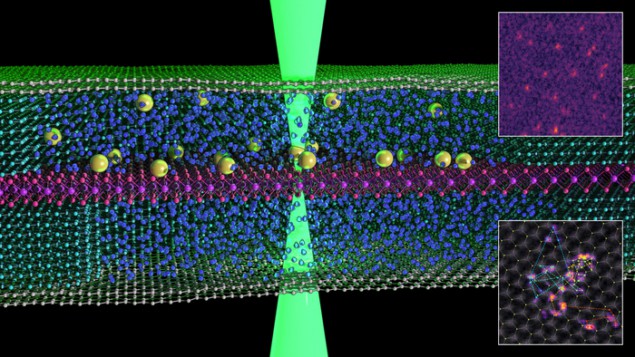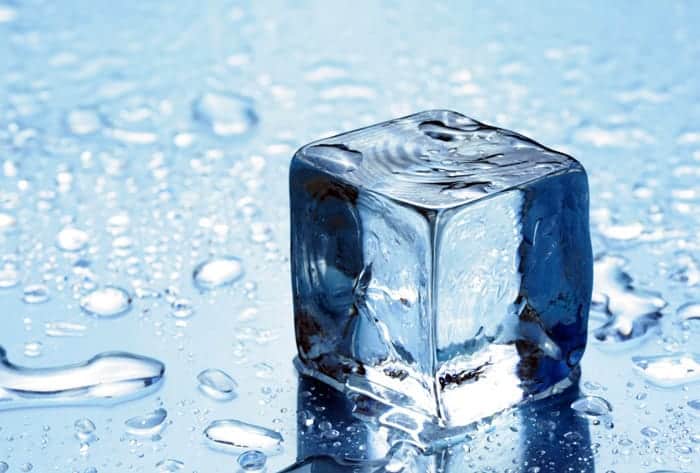
A new technique makes it possible to capture videos of single atoms “swimming” at the interface between a solid and a liquid for the first time. The approach uses stacks of two-dimensional materials to trap the liquid, making it compatible with characterization techniques that usually require vacuum conditions. It could enable researchers to better understand how atoms behave at these interfaces, which play a crucial role in devices such as batteries, catalytic systems and separation membranes.
Several techniques exist to image single atoms, including scanning tunnelling microscopy (STM) and transmission electron microscopy (TEM). However, they involve exposing atoms on the surface of the sample to a high-vacuum environment, which can change the material’s structure. Techniques that do not require a vacuum, meanwhile, are either lower-resolution or only work for short time periods, meaning that the atoms’ motion cannot be captured on video.
Researchers led by materials scientists Sarah Haigh of the University of Manchester’s National Graphene Institute (NGI) have now developed a new approach that enables them to track the motion of single atoms on a surface when that surface is surrounded by liquid. They showed that the atoms behave very differently under these circumstances than they do in vacuum. “This is crucial,” explains Haigh, “since we want to understand atomic behaviour for realistic reaction/environmental conditions that the material will experience in use – for example, in a battery, supercapacitor and membrane reaction vessels.”
Sample suspended between two thin layers of liquid
In their experiments, the NGI researchers sandwiched their sample – in this case, atomically-thin sheets of molybdenum disulphide – between two sheets of boron nitride (BN) in a TEM. They then used lithography to etch holes in specific regions of the BN so that the sample could be suspended in the areas where the holes overlapped. Finally, they added two graphene layers above and below the BN and used these to trap a liquid in the holes. The resulting structure, in which the sample is suspended between two layers of liquid, is just 70 nm thick, Haigh tells Physics World.
Thanks to this so-called double graphene liquid cell, the researchers were able to acquire videos of the single atoms “swimming” while surrounded by liquid. By then analysing how the atoms moved in the videos and comparing this motion to theoretical models developed by colleagues at the University of Cambridge, they obtained fresh insights into how a liquid environment affects atomic behaviour. For example, they found that the liquid accelerates the atoms’ movement while also changing their preferred “resting sites” with respect to the underlying solid.

Graphene sandwich squares away ice
“The new technique could help improve our understanding of the behaviour of atoms at solid-liquid interfaces,” Haigh says. “Such interfacial behaviour is generally only probed at lower resolution, but it determines the lifetime of batteries, the activity and longevity of many catalytic systems, the functionality of separation membranes as well as many other applications.”
The researchers say they are now studying a wider range of materials and how their behaviour changes for different liquid environments. “The aim here is to optimize the synthesis of improved materials that will be needed for the net zero energy transition,” Haigh concludes.
The study is detailed in Nature.



